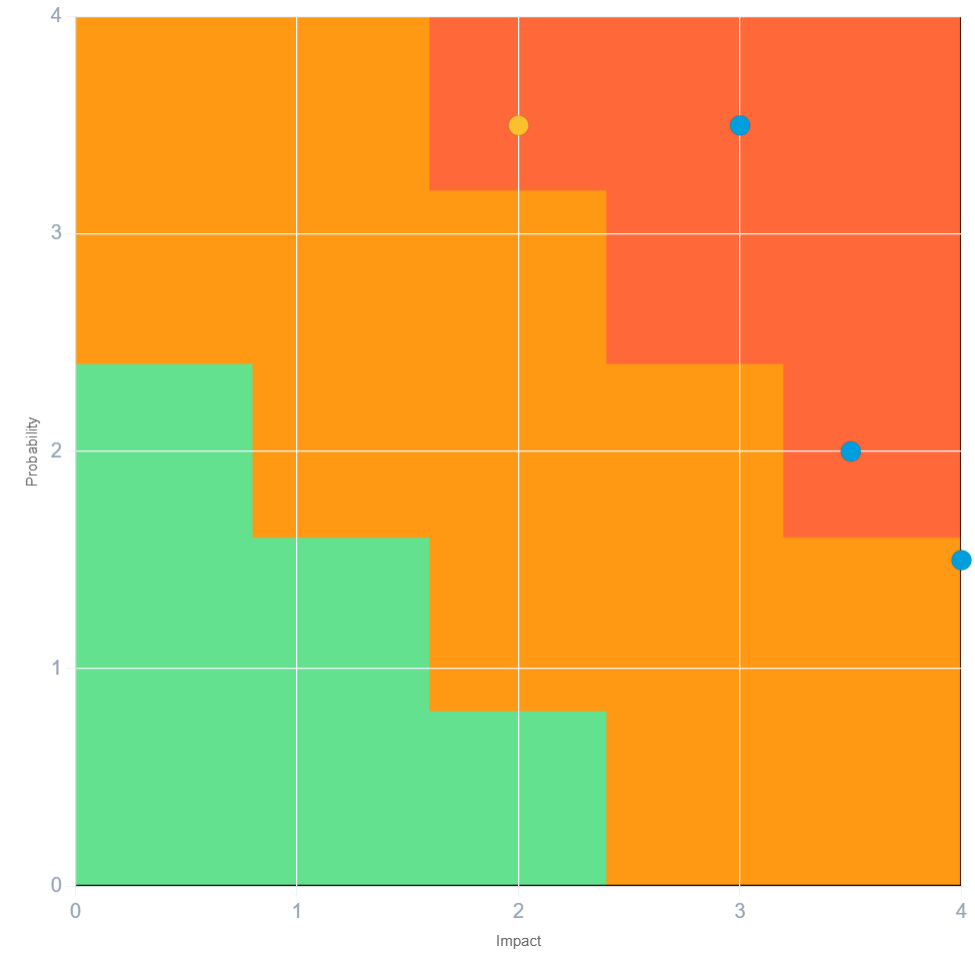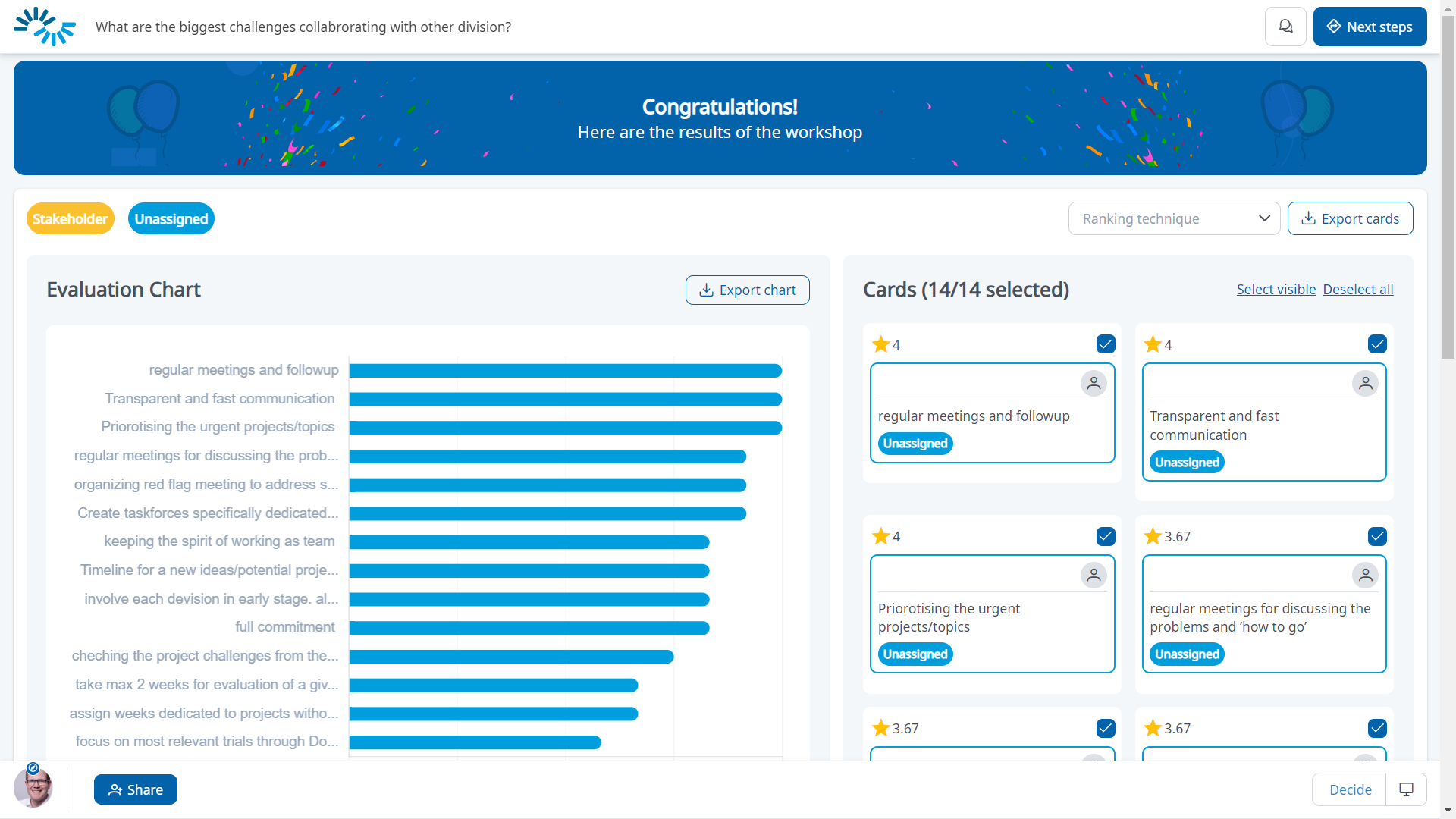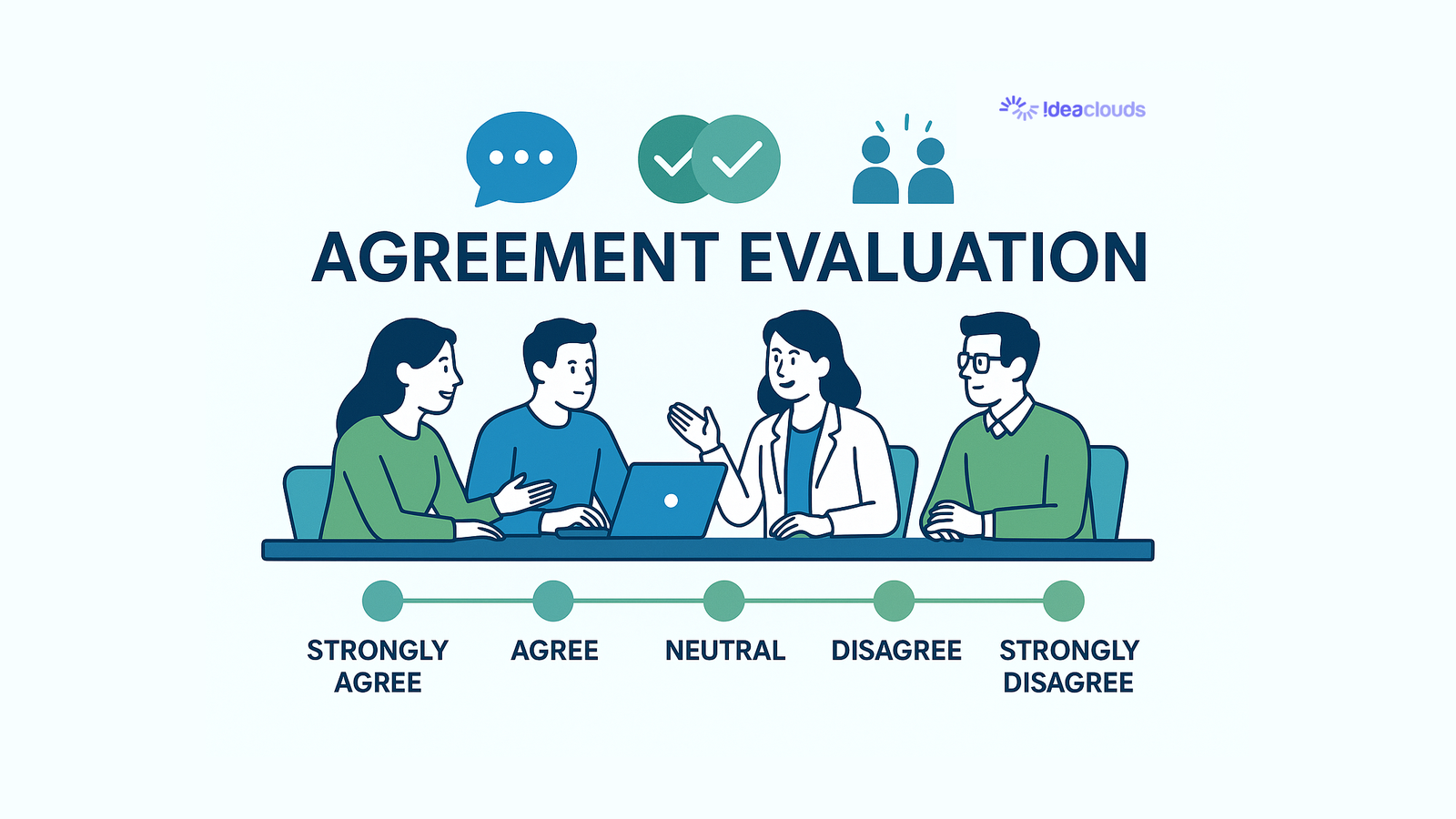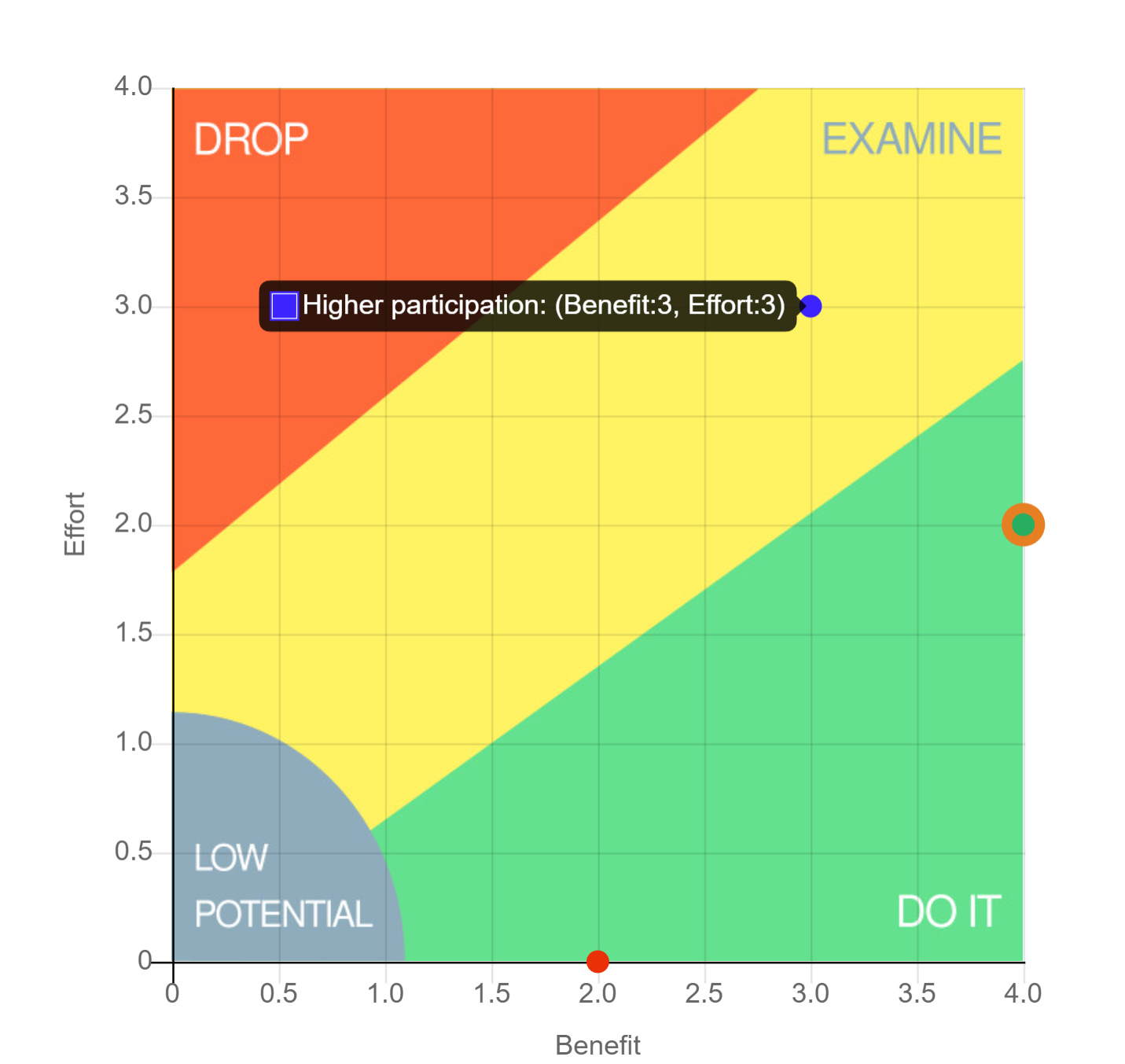Enterprise risk managers face a critical challenge: how to identify and assess potential risks comprehensively while keeping workshops efficient. Traditional risk analysis meetings often suffer from groupthink, dominant voices, and incomplete risk coverage. More critically, they rely on individual expert judgment rather than collective team intelligence.
The Impact & Probability matrix method, combined with structured digital collaboration, provides a proven framework for more effective risk identification workshops. Instead of one risk manager making judgment calls, this approach leverages anonymous collaborative assessment to produce more accurate and comprehensive risk evaluations.
A Structured 3-Phase Risk Assessment Workshop Framework
Phase 1: Anonymous Collaborative Risk Identification
Effective risk workshops begin with anonymous brainstorming to ensure all team members contribute freely. Anonymous submission removes hierarchy bias and prevents single voices from dominating the discussion. Digital tools enable real-time parallel contribution, allowing multiple perspectives to surface risks that any single expert would miss.
Phase 2: Structured Evaluation with Impact & Probability Assessment
The Impact & Probability matrix is a standard risk management methodology where each identified risk is evaluated on two dimensions:
- Impact: The severity of consequences if the risk occurs (typically scaled 1-5)
- Probability: The likelihood of the risk occurring (typically scaled 1-5)
This two-dimensional evaluation enables teams to objectively compare risks and focus on high-impact, high-probability threats first. Crucially, evaluation is done collaboratively and anonymously. Every team member assesses each risk independently, and their scores are automatically aggregated. This collective intelligence approach is statistically more accurate than individual expert judgment.
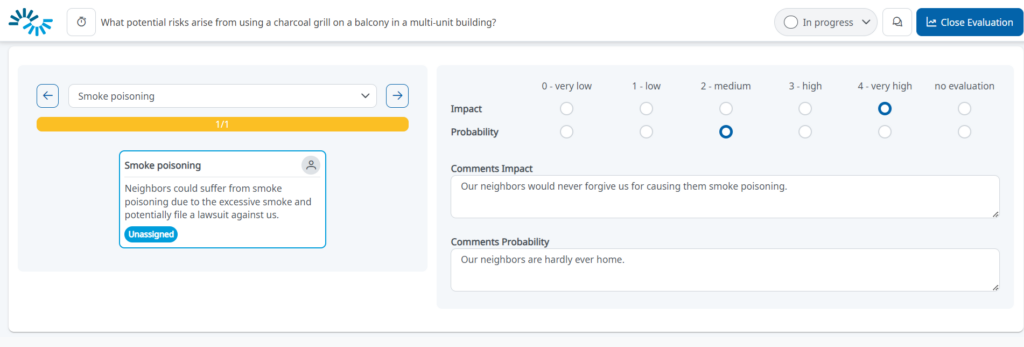
Phase 3: Risk Matrix Visualization for Prioritization
The aggregated results plot risks on a matrix with Impact on one axis and Probability on the other. This visual representation organizes risks into three color-coded priority zones:
- Red zone (high priority): Risks with high impact and/or high probability require immediate attention and mitigation planning.
- Orange zone (medium priority): Risks with moderate impact and probability should be monitored with planned preventive measures.
- Green zone (low priority): Risks with low impact and low probability should be acknowledged but don’t require significant resource investment.
The matrix also reveals consensus patterns: risks where the team has unanimous agreement on severity, risks with split opinions that signal the need for discussion and clarification, hidden risks that junior team members see but senior leaders miss, and false alarms that one person worried about but the team knows are low probability.
Why Traditional Tools Fall Short for Collaborative Risk Assessment
The difference isn’t just speed. It’s feasibility. Coordinating anonymous evaluation from 15 participants across 30 risks means tracking 450 individual assessments. Manual methods make this practically impossible during a live workshop, forcing teams to either:
- Skip collaborative evaluation entirely (one person decides)
- Extend workshops across multiple sessions (participant fatigue)
- Simplify to fewer risks/participants (incomplete coverage)
Excel/Spreadsheets During Calls:
- Only one person can edit at a time. Others watch passively.
- No anonymous contribution. Everyone sees who said what.
- Manual aggregation of scores is error-prone and time-consuming.
- No real-time visualization of results.
Generic Online Whiteboards (Miro, Mural):
- Risk items are visible during brainstorming, which discourages controversial risks.
- Evaluation scores are public. Hierarchy bias remains.
- Manual calculation of averages across participants.
- Facilitator manually drags risks onto matrix while participants shout conflicting directions: "No, more to the left!" "Higher!" "Move it right!"
- No automatic risk matrix generation from actual evaluation data.
Traditional Meeting Format:
- Risks are discussed one-by-one, which is extremely time-consuming.
- Dominant voices steer the conversation.
- Junior members stay silent to avoid conflict.
- No systematic evaluation. Priorities are based on who argues loudest.
Digital tools make comprehensive collaborative assessment logistically practical, not just faster.
Why This Methodology Works for Enterprise Risk Teams
Collective Intelligence Over Individual Opinion
Instead of one risk manager making judgment calls, the collaborative Impact & Probability method aggregates assessments from all participants. When 8 team members evaluate a risk, the averaged scores are statistically more accurate than individual expert judgment and build team buy-in for the resulting risk priorities.
Higher Participation Rates
Anonymous contribution increases participation compared to traditional meetings where junior team members hesitate to challenge senior opinions. Every voice contributes equally, regardless of hierarchy.
More Comprehensive Risk Coverage
Multiple perspectives reveal risks that single-expert analysis would miss. The anonymous parallel contribution format captures risks that participants might not voice in traditional meetings due to politics or social pressure.
Efficient Workshop Execution
Parallel contribution and structured evaluation streamline the workshop process. Digital collaboration tools eliminate the sequential bottlenecks of traditional facilitation methods.
Pre-Selection for Deep Analysis
Quick collaborative evaluation by the team helps pre-select risks that need further detailed analysis, rather than treating all identified risks equally.
Built-in Documentation
The process creates complete documentation of identified risks, evaluation scores, and visual prioritization. This eliminates post-meeting documentation effort.
Seamless Integration
Results can be exported to Excel or other risk management tools for further analysis and tracking.
Implementation Approach
This structured approach to risk identification workshops transforms ad-hoc risk discussions into systematic, comprehensive assessments. Digital collaboration platforms like IdeaClouds provide the anonymous contribution, automated evaluation aggregation, and visual prioritization capabilities that make this methodology practical for distributed enterprise teams.
The workflow can be adapted to various tools, though purpose-built risk assessment features (like automatic matrix visualization, anonymous evaluation collection, and instant statistical aggregation) significantly reduce facilitation overhead and make collaborative assessment logistically feasible at enterprise scale.
While risk identification helps teams understand threats and opportunities, effective product prioritization requires balancing risk against business value, customer impact, and strategic alignment. Discover how flexible criteria frameworks outperform rigid methods like RICE and MoSCoW in our Product Decision Making & Prioritization Guide.
Ready to move beyond manual risk assessment? See how purpose-built digital tools enable the collaborative anonymous evaluation and automatic matrix visualization described in this methodology.
